Meaning of the Double Cross Symbol
The Double Cross Symbol, or the Patriarchal/Lorraine Cross, has its roots in medieval heraldry, prominently emblazoned on coats of arms and banners to signify ecclesiastical rank and authority. This emblem, deeply ingrained in Christian symbolism, represents the dual nature of Christ and is especially revered in the Eastern Orthodox Church.
Historically, it also marked noble lineages and ecclesiastical power, appearing in religious icons and architecture. Over time, it became a potent symbol in both secret societies and modern cultural expressions, from fashion to digital media.
For a fuller understanding of this enigmatic symbol's multifaceted significance, explore further.
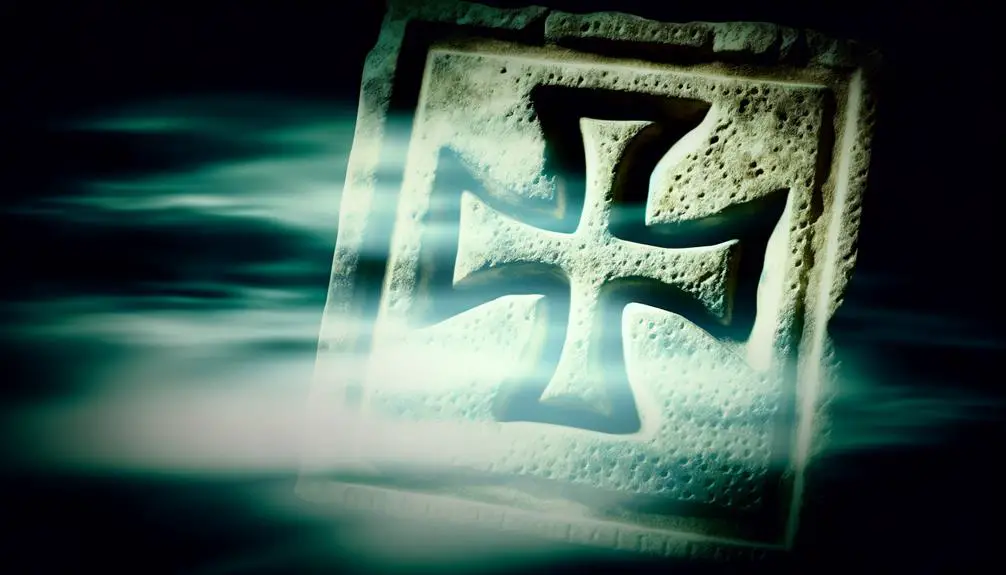
Key Takeaways
- The double cross, also known as the Patriarchal or Lorraine Cross, symbolizes Christ's dual nature.
- It denotes ecclesiastical authority and rank, especially among bishops in medieval heraldry.
- Prominently used in Eastern Orthodox Christianity to signify Christ's crucifixion and teachings.
- In heraldry, it signifies authority, protection, and allegiance.
- The double cross enriches spiritual and cultural heritage by representing esoteric wisdom and the perpetual struggle between opposing forces.
Historical Origins
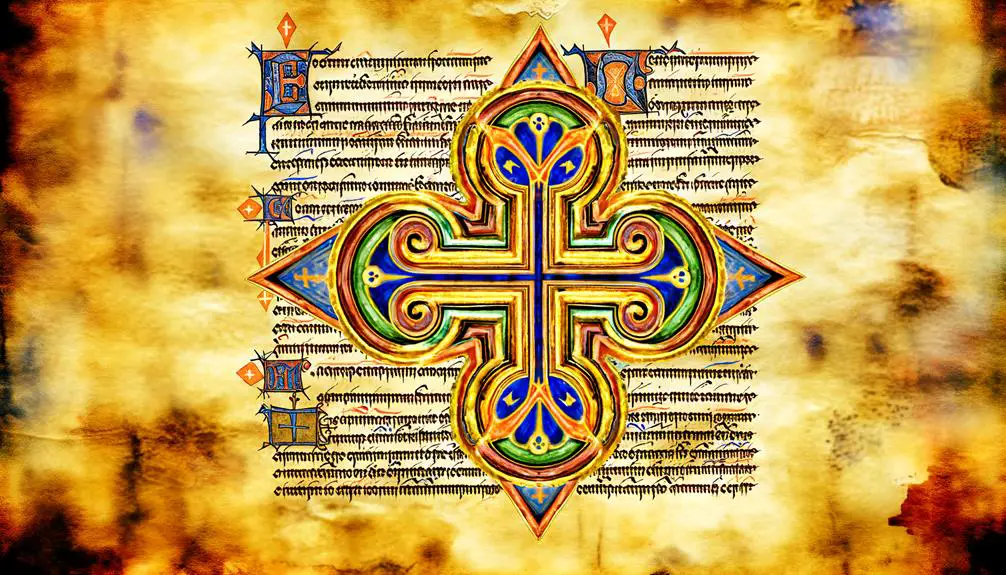
The historical origins of the double cross symbol can be traced back to medieval heraldry, where it served as a complex emblem of faith, power, and nobility.
This symbol, often known as the Patriarchal or Lorraine Cross, featured prominently on coats of arms, banners, and seals. Its design, comprising a vertical line intersected by two shorter horizontal bars, evolved as a distinctive mark of distinction. Each bar was imbued with symbolic meanings, reflecting the dual aspects of secular and ecclesiastical authority.
The upper bar, shorter and more elevated, represented divine guidance, while the lower, longer bar symbolized earthly jurisdiction. Over time, the double cross became a potent heraldic icon, encapsulating the intertwined domains of governance and spiritual dominion in medieval society.
Religious Significance
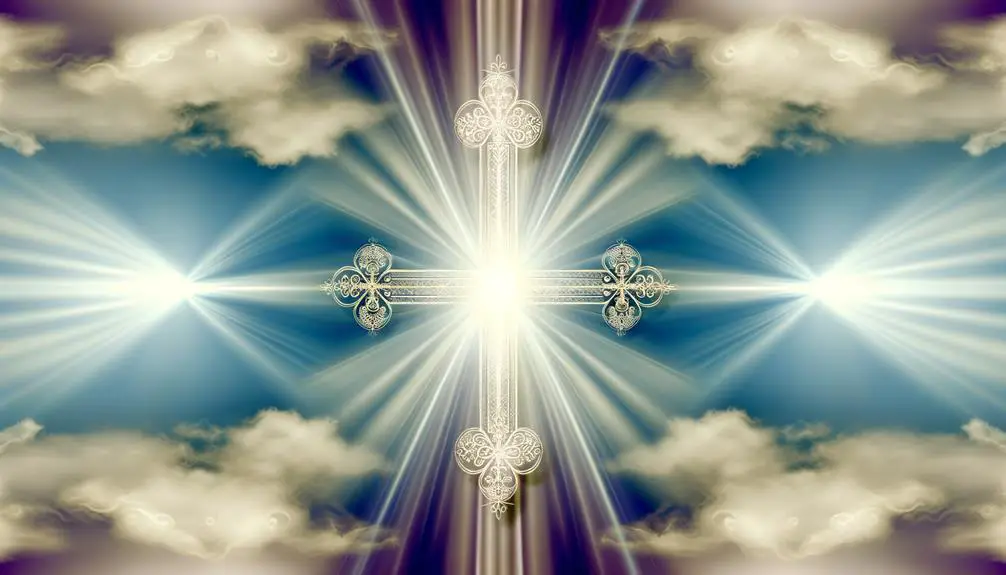
The religious significance of the double cross symbol is deeply rooted in Christian symbolism. It represents the dual nature of Christ's sacrifice.
Various forms of the cross have emerged throughout history. Each has unique theological interpretations and liturgical functions.
Historically, the double cross has been prominently used by the Eastern Orthodox Church. It symbolizes the authority and sanctity of Christ's teachings.
Christian Symbolism Origins
Rooted deeply in early Christian traditions, the double cross symbol—often associated with the Patriarchal or Lorraine Cross—carries significant religious meaning that has evolved over centuries to represent the dual nature of Jesus Christ as both human and divine. This emblem, with its two horizontal bars, has been steeped in theological and historical contexts since its inception.
- Early Christian Adoption: Incorporated to distinguish ecclesiastical authority and the duality of Christ.
- Crusades Symbolism: Used by Crusaders, particularly in the Lorraine region, as a mark of their faith and mission.
- Orthodox Christianity: Emblematic within Eastern Orthodoxy, signifying spiritual and temporal power.
- Heraldic Use: Featured in coats of arms to denote nobility and religious devotion.
- Modern Interpretations: Continues to be a powerful symbol in contemporary religious and cultural contexts.
Cross Variations Explained
Diverse forms of the cross, each imbued with unique religious significance, reflect the rich tapestry of Christian iconography and theological interpretation.
The Latin cross, or crux ordinaria, epitomizes Christ's crucifixion, signifying salvation and sacrifice.
The Greek cross, with arms of equal length, symbolizes the universal nature of Christ's message and the balance between the earthly and divine.
The Celtic cross, adorned with a nimbus, merges Christian and Celtic traditions, emphasizing eternity and unification.
The double cross, or Patriarchal cross, with its two horizontal beams, denotes Christ's dual nature as both divine and human and is often associated with Eastern Christianity.
Each variant encapsulates distinct theological insights, enriching the spiritual and cultural heritage of Christianity.
Historical Church Usage
Throughout history, various forms of the cross have been prominently featured in ecclesiastical architecture and liturgical artifacts, serving as potent symbols of theological doctrines and church authority. The double cross, or Patriarchal Cross, holds particular historical significance, especially within Eastern Orthodox and Eastern Catholic traditions. It typically consists of two horizontal bars, symbolizing the dual nature of Christ—both human and divine—and emphasizing the universality of the Christian message. Its usage is notable in several contexts:
- Episcopal Insignia: Denotes the rank and authority of bishops.
- Liturgical Vestments: Embroidered on garments to signify clerical hierarchy.
- Church Architecture: Incorporated in design elements of cathedrals and chapels.
- Religious Icons: Featured in iconography to convey spiritual truths.
- Processional Crosses: Used in religious ceremonies and parades.
Heraldic Usage

The double cross symbol has a rich historical significance in heraldry, often representing a composite of religious and secular authority. Its symbolic interpretations vary, from signifying the union of dual domains to embodying the virtues of sacrifice and protection.
Over time, the double cross evolved in heraldic traditions, adapting to the cultural and political landscapes of different regions, thereby illustrating its dynamic nature in the visual language of nobility.
Historical Significance
While the double cross symbol has permeated various cultural and religious contexts, its usage in heraldry during the medieval period exemplifies its significance as a marker of nobility and ecclesiastical authority. The double cross, often seen in the coats of arms, conveyed a potent message of spiritual and temporal power.
Originating from Byzantine influences, it was adopted by European heraldry to denote high status and divine favor. This emblem was particularly prominent among:
- Crusader Knights seeking to manifest their holy mission.
- Eastern European nobility, notably in Hungary and Lithuania.
- Catholic bishops and archbishops.
- The Knights Templar, signifying their dual allegiance to God and the Pope.
- Royal families, as a symbol of their divine right to rule.
This heraldic adoption underscores the deep intertwining of religion and governance in medieval society.
Symbolic Interpretations
Frequently emblazoned on shields and banners, the double cross symbol in heraldic usage encapsulates a multifaceted representation of spiritual authority, martial prowess, and ancestral lineage. Historically, this emblem was adopted by crusading knights and ecclesiastical figures, symbolizing their divine mission and commitment to the Christian faith.
The two horizontal bars often signify the duality of earthly and heavenly domains, reinforcing the bearer's role as a protector of both temporal and spiritual territories. Additionally, the double cross served as a mark of noble heritage, delineating distinguished bloodlines and their storied legacies.
Its presence in heraldry thus conveys a potent blend of piety, might, and heritage, intertwining individual valor with broader historical and spiritual narratives.
Evolution in Heraldry
As heraldry evolved over the centuries, the double cross symbol underwent significant stylistic and interpretive transformations, reflecting broader shifts in social, political, and religious paradigms. Initially adopted by ecclesiastical heraldry, the double cross signified ecclesiastic authority and divine protection.
Over time, it began to feature prominently in the coats of arms of noble families and military orders, each iteration carrying distinct connotations.
- Crusader Emblem: Represented Christian military expeditions.
- Royal Insignia: Denoted allegiance to specific monarchs.
- Knightly Orders: Symbolized chivalric principles and virtues.
- Regional Variations: Adapted to local heraldic traditions.
- Modern Usage: Incorporated into various national and civic emblems.
This evolution underscores the double cross's versatility and enduring resonance across diverse contexts.
Symbolism in Secret Societies
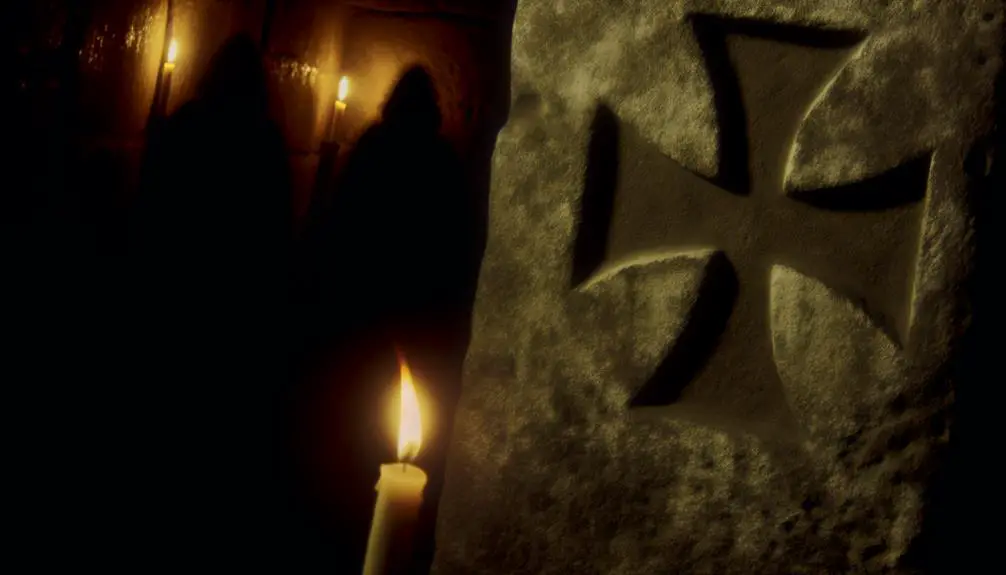
Intricately woven into the fabric of secret societies, the double cross symbol carries a rich tapestry of historical significance and interpretive nuances that reflect the clandestine nature of these enigmatic groups.
Historically, the double cross was often employed to signify duality and secrecy, encapsulating hidden meanings that were accessible only to initiates. Its layered structure could represent the dual paths of knowledge and enlightenment or the perpetual struggle between opposing forces.
In certain contexts, it served as a marker of allegiance or rank within hierarchical societies, embedding a code of loyalty and trust. The symbol's enigmatic design enabled it to be a powerful tool for communication, embodying the esoteric wisdom that secret societies have guarded through the ages.
Modern Interpretations
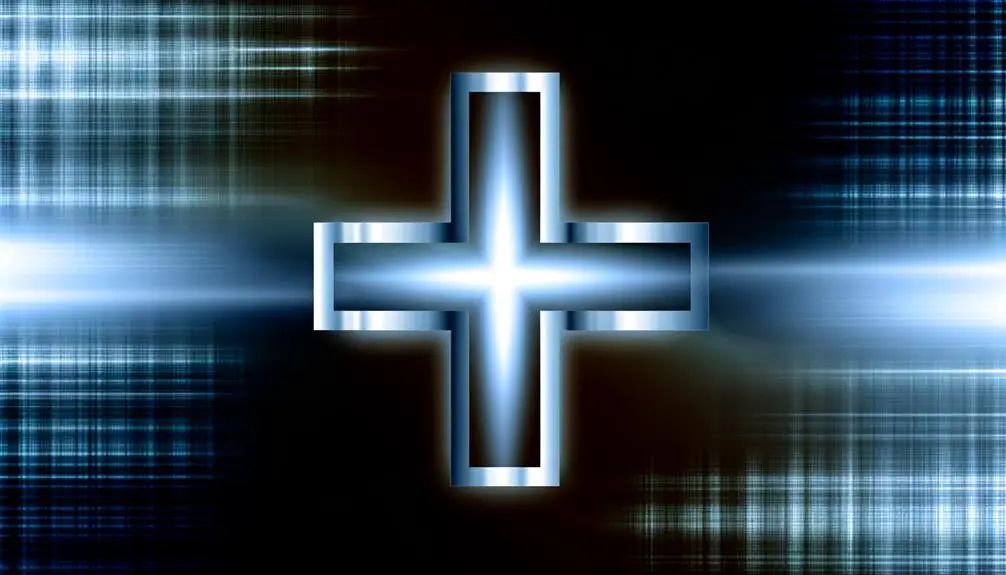
In contemporary society, the double cross symbol has evolved beyond its historical roots in secret societies, now often reinterpreted through the lenses of modern art, popular culture, and psychological symbolism. This metamorphosis reflects a broader dialogue about the symbol's contemporary relevance and layered meanings.
Artists and designers incorporate the double cross to evoke themes of duality, balance, and conflict.
- Modern Art: The symbol is utilized to explore complex human emotions and societal issues.
- Fashion: Designers use it to create striking, avant-garde collections.
- Cinema: Filmmakers imbue characters and narratives with deeper significance through this symbol.
- Psychology: Represents internal conflicts and the dual nature of human identity.
- Digital Media: Used in branding and logos to signify innovation and disruption.
This multifaceted interpretation underscores the symbol's enduring resonance.
Cultural Variations
Throughout various cultures, the double cross symbol has been adapted and reinterpreted, each imbuing it with unique meanings rooted in their historical and societal contexts.
In Eastern Orthodox Christianity, the double cross, or Patriarchal Cross, represents Christ's crucifixion, with the lower, slanted bar symbolizing the balance of justice.
Meanwhile, in Japanese culture, the double cross is seen in the Kamon symbols, emblematic of family heritage and social status.
In heraldry, particularly in European traditions, it signifies authority and protection.
Each interpretation reflects the distinctive cultural landscapes, encapsulating spiritual, familial, or hierarchical significance.
Conclusion
The double cross symbol, with its origins rooted in history and religious significance, serves as a potent emblem across various contexts, from heraldry to secret societies.
Its interpretations have evolved, mirroring cultural and societal shifts. Like an ancient tapestry, richly woven with threads of meaning, the double cross continues to captivate, embodying a complex interplay of faith, power, and mystique.
Its enduring presence attests to its profound and multifaceted symbolism within human civilization.





